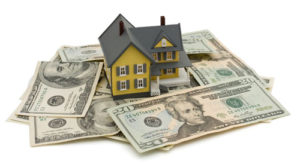 You’ve budgeted carefully, been pre-approved for a home loan, searched listings, and found a promising house that might be your new home. You’ve arranged a viewing. But what should you look for when viewing a house? What are problems that can be fixed? What are deal-breakers? And how do you know? This is a pivotal time that can decide whether you want to make an offer on the house or not. When you know what to look for when viewing a house, you can decide if it’s the right fit, or if you should keep looking.
You’ve budgeted carefully, been pre-approved for a home loan, searched listings, and found a promising house that might be your new home. You’ve arranged a viewing. But what should you look for when viewing a house? What are problems that can be fixed? What are deal-breakers? And how do you know? This is a pivotal time that can decide whether you want to make an offer on the house or not. When you know what to look for when viewing a house, you can decide if it’s the right fit, or if you should keep looking.
When you view a house, it’s the first time you get to be inside and see every room. Sometimes, the house is just like the pictures you saw online. Other times, it’s quite different. You might be excited about the house, apprehensive, or a bit of both. It’s best to have a written list of what to look for when viewing a house, so your excitement or nerves don’t cause you to overlook key elements. Here’s a list of what to look for when viewing a house.
As you walk up to the house and look around the yard, take a look at the slope, or grade of the property. The yard should slope away from the home, so water doesn’t accumulate around the foundation. If the grade slopes toward the home, it’s difficult and expensive to fix. Look for soft spots or puddles in the yard, especially if it’s recently rained.
If the water is on in the house, run the faucets. If the water pressure is low, it can indicate a problem with the plumbing or water heater.
Check under the sinks and look for water damage or dripping as you run the faucets. Don’t be fooled by new hardware—quick flippers might replace old faucets, but leave faulty plumbing behind.
One of the most important things to look out for when viewing a home is discoloration on the floor or walls. A yellowed, mildewed look indicates that there’s been water damage in the past. This might indicate a leaky roof or faulty plumbing, both of which can be expensive to fix.
- Look in the Attic and Basement
The attic and basement might not be usable spaces, but it’s a good idea to check them out anyway. These areas will often tell you if water damage is a problem in the house, either from a leaky roof or low foundation. This is often where signs of pest problems will appear as well. A few spiders or flies are inevitable, and not a problem, but if you see droppings, insect wings or parts, signs of chewed wood, or nests, there may be an ongoing infestation.
The home’s roof is one of the most expensive things to replace. You’ll most likely have to replace the roof eventually if you live in the house long-term, but you don’t want to repair or replace the roof right after you move in. Look for curling or missing shingles, grit in the rain gutters, discoloration or moss. All these signs indicate that the roof hasn’t been replaced in a while, and will need to be replaced soon. Worse, there may already be a leak that has damaged the insulation and wood underneath.
- Look at Heating and Cooling Systems
The water heater, furnace and air conditioner systems are expensive to replace, so these are important to look at when you view a house. First, test each of them to be sure that they work. You might turn the heating or cooling system on when you first start looking around, so you can see if it heats or cools the house evenly. If there are strange noises coming from a heating or cooling unit, or the unit is rusted, it’s a bad sign.
There may be small, narrow cracks in the drywall due to lumber shrinking after the home is built. This probably isn’t cause for concern. However, if you notice large, wide cracks in the walls or the basement floor, this may be a sign of structural damage.
To check the home’s wiring, run the appliances and then turn on some lights or lamps. If the lights flicker or dim, it can be a sign of faulty wiring. If only one light has a problem, it’s probably a loose bulb or bad switch. However, if a number of lights flicker or dim throughout the house, it indicates bad writing or a faulty circuit breaker, both which can be big hazards.
Once you’ve gone through the house and marked off other items on your list, take a walk around the neighborhood. You might also visit at different times later on. Look for residents walking dogs, children playing, and well-kept yards. These are all signs the neighborhood is safe, friendly, and residents care about it.
Things like unpleasant paint, outdated decor’, or other aesthetic issues can be fixed, but big-ticket items can seriously complicate your purchase. Knowing what to look for when viewing a house can help you decide if you want to continue moving forward or not, but it won’t replace an inspection by an expert. If you’ve gone through your initial list, contact an inspector to take a closer look and make sure the home is safe and structurally sound.





